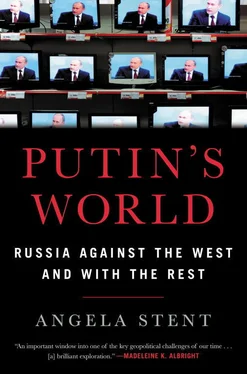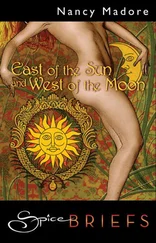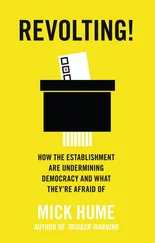But while the Russian state and the EU were experiencing mutual alienation and disappointment, the new middle class and wealthy Russians were becoming more European. They established businesses, bank accounts, and residences in London, Paris, and Berlin; they sent their children to British boarding schools; and they vacationed in Courchevel, Cannes, and Crete. The rise of capitalism in Russia and the end of Soviet-era travel restrictions created a new class of wealthy and middle class, peripatetic European Russians. They became personally integrated with Western society. And they began to influence Europe. Western Europe inevitably began to change with the influx of Russian money and ways of doing business.
VLADIMIR PUTIN: THE WARY EUROPEAN
Vladimir Putin’s personal experience in Europe was—distinctively—his five years as a KGB case officer in Dresden. The Europe in which he lived was the artificial, repressive East German state that viewed West Germany as its main enemy and a threat to its very existence. But it was also a country that, although it had largely replicated the Soviet economic system, managed to provide its population with a significantly higher standard of living than that in the Soviet Union, largely due to West German economic support. Putin came to admire German and European economic achievements. Europe’s primary attraction for him—as for Peter the Great—is the economic model of successful modernization. But he has never viewed the idea of Europe as a model to be emulated, nor does he appear to understand that Europe’s successful modernization was a product of both a free market economy and a democratic political system based on the rule of law. Putin has rather looked to China’s model of successful authoritarian modernization. Under Putin’s leadership, the Russian economy recovered and the state became stronger. Europe’s dependence on Russian energy grew, and Russia was able to reassert influence in Europe for two reasons: its rise as an energy superpower and the modernization of its military.
The Russians, and the Soviets before them, have always had difficulty understanding how the EU operates, both because of its complex bureaucracy and because of its self-perception as a community of values. Putin’s relationship with Europe began before the EU enlargement. It was easier for the Kremlin to deal with a Europe in which there were fifteen member states, in 2000, than with the twenty-eight member states after the 2004, 2007, and 2013 enlargements to include Central Europe and the Baltic states. “Old” Europe, to quote Donald Rumsfeld, was less wary of Russia than “new” Europe, and after 2004, ties with the EU became more complicated. 8Putin, like his predecessors, has always favored focusing on bilateral ties with the most important European states. His attitude toward the EU echoes that of Henry Kissinger, who famously once asked, “What telephone number do I call if I want to call Europe?” He has questioned how effective an institution can be if it rotates presidents every six months and if member states have to give up sovereignty voluntarily. For Putin, the whole system is implausible. He believes absolute sovereignty is one of the most important attributes of statehood and derzhavnost’ (great-power strength). It is hard for him to comprehend why Germany, France, or the UK would have ceded their sovereignty to Brussels-based bureaucrats, and it was gratifying to him when Euroskeptical movements began to grow and when Britain voted to leave the EU—Brexit. For Moscow, it is infinitely preferable to deal with nation-states and cultivate bilateral relations than to deal with the EU.
THE COUNCIL OF EUROPE
Russia’s difficult relations with the Council of Europe (COE) highlight the ambivalence with which Russia and Europe deal with each other. The COE, which dates back to 1949, is an organization that promotes democracy, human rights, and the rule of law in Europe. It is not part of the European Union. It sees itself as the “democratic conscience of Europe.” 9
It has an executive branch, a Parliamentary Assembly (PACE), and the Strasbourg-based European Court of Human Rights (ECHR), which hears cases brought by individuals in any member state. Before the fall of communism, the COE’s membership was limited to Western Europe, but after 1991 the former communist states began to join, as they sought to move closer to Europe. Today the COE has 47 member states, and the PACE has 324 parliamentarians representing the major political parties in the member states. 10
Russia became a member of COE in 1996. A main motivation for joining was the search for recognition and international respectability, which began in the Yeltsin era. The council agreed to admit Russia and its neighbors not because they were democracies that respected the rule of law and human rights but because it hoped to encourage them in that direction. Russia joined as a means of legitimizing its new status as an emerging democracy. From the beginning, there were doubts about whether Russia belonged in the COE, in view of Yeltsin’s 1993 firing on the Russian parliament when it opposed his policies, the war in Chechnya, the growth of nationalist and neo-communist parties, and the hardening of Russian foreign policy after Primakov replaced Kozyrev. But many members believed that it would be unwise to isolate Russia and affirmed that Russia belonged in Europe.
Russia signed on to the European Convention on Human Rights (ECHR) and also agreed to abolish the death penalty, two necessary conditions for joining. The Russian legal system incorporated elements of the COE’s human rights code, and the Russian Constitutional Court acknowledged legal precedents set in the Strasbourg-based ECHR and sometimes refers to them in its own legal decisions.
In the more than twenty years since it joined, Russia has several times had its voting rights suspended because of the war in Chechnya and the war in Ukraine. Its parliamentarians have engaged in acrimonious debates with their European counterparts. But despite these problems, Russia insists on remaining in the organization because it values the international recognition it brings and the public forum it provides for Russian officials to present their point of view. As the largest member state, it sends one of the biggest parliamentary delegations, including such harsh critics of the COE as the ultranationalist Vladimir Zhirinovsky and the former communist leader Gennady Zyuganov.
Perhaps the most unexpected aspect of Russia’s membership in the COE has been the role of the ECHR. The largest number of cases brought before the court come from Russia, and these cases form 25 percent of the court’s total caseload. Russian citizens who believe they cannot receive justice from their own legal system present their cases in Strasbourg, and frequently the judgment goes in their favor. Most surprisingly, the Russian courts often honor the decisions made in Strasbourg, including paying financial compensation to plaintiffs. The ECHR complains that its agenda is dominated by Russian cases and has repeatedly suggested that the Russian court system needs to improve and redress its citizens’ grievances at home, not in Strasbourg. But so far the European consensus is that it is preferable to have Russia in the ECHR—“integration is better than isolation: cooperation is better than confrontation.” 11As the head of Human Rights Watch in Russia said, “The European court… has been the most successful international protection mechanism” for rights in Russia. It is the “court of last resort in a situation when they cannot find justice in domestic courts.” 12
In July 2018, the court ruled to award 37,000 in damages to the members of the anti-Kremlin Pussy Riot rock group. They were jailed for two years on charges of hooliganism for a 2012 unsanctioned performance in Moscow’s Cathedral of Christ the Saviour of a song titled “Punk Prayer: Mother of God Drive Putin Away.” The ECHR ruled that Russia had violated the group’s rights to liberty, a fair trial, and freedom of expression. 13
Читать дальше












